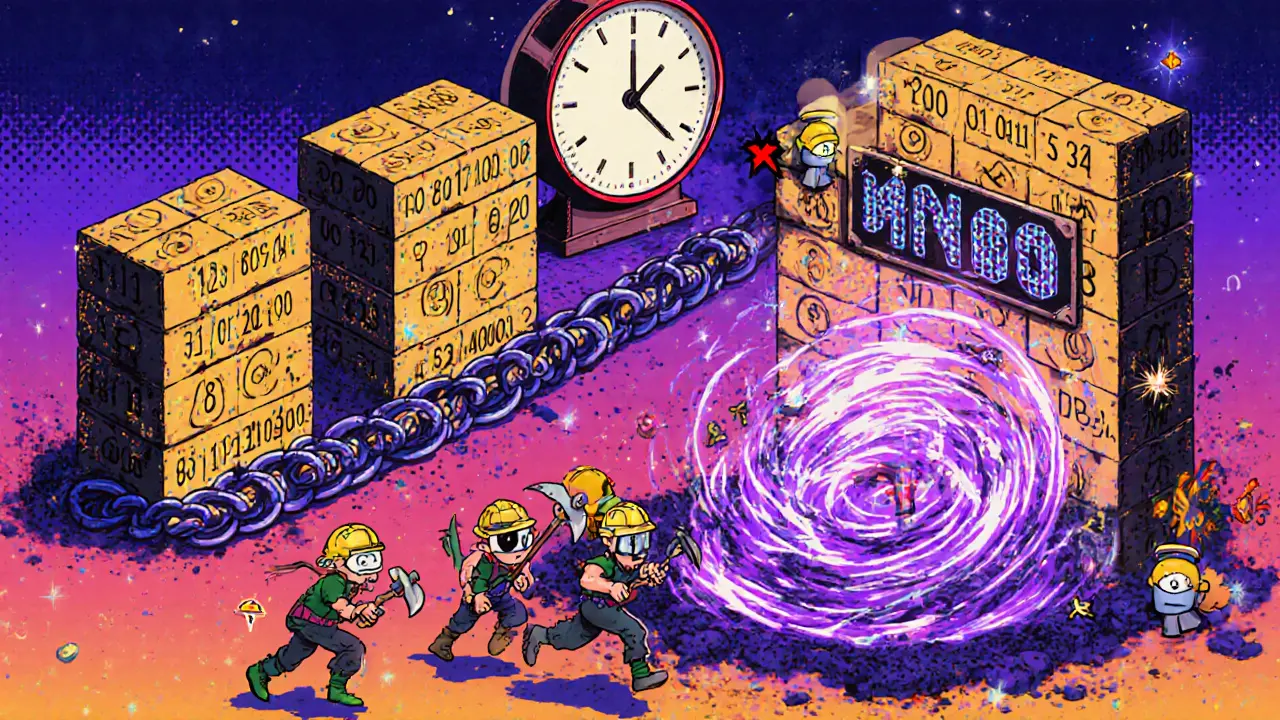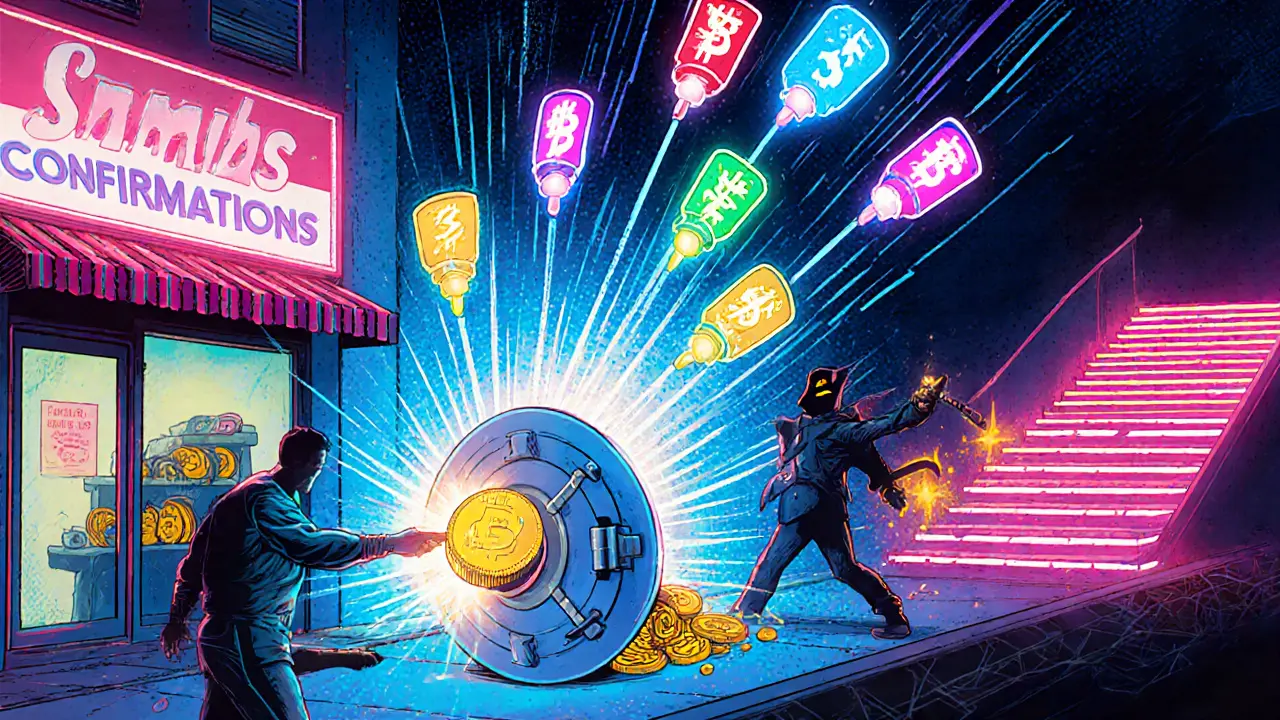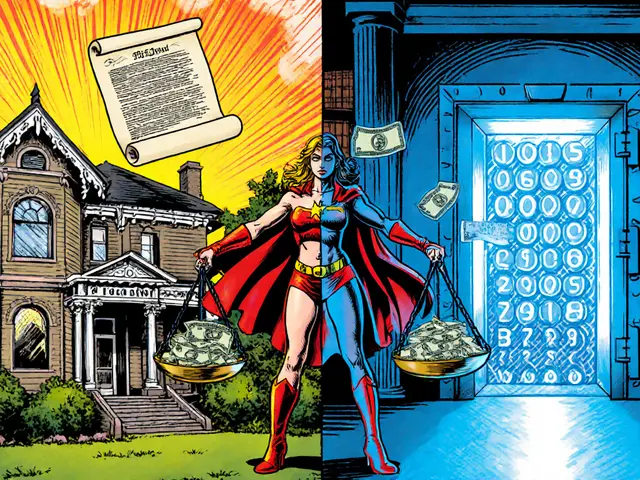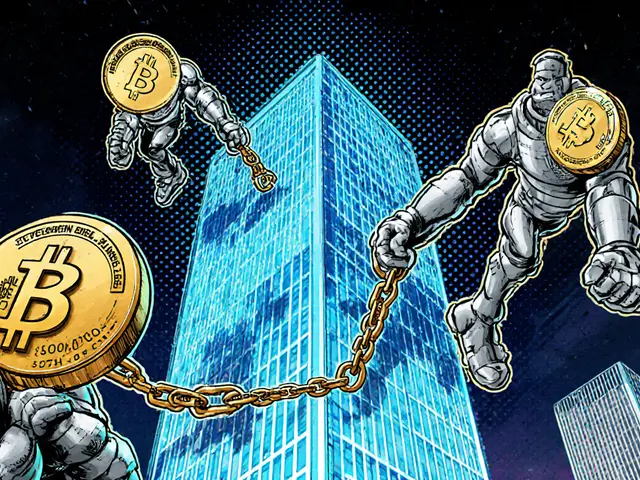Bitcoin Double-Spending Protection Calculator
Transaction Security Analysis
Enter values and click "Calculate Security Level"
About Bitcoin Security
Bitcoin prevents double-spending through a combination of cryptographic proof-of-work, immutable blockchain records, and transaction confirmations. Each confirmation exponentially reduces the risk of a transaction being reversed.
As a general rule, 6 confirmations provide strong security for high-value transactions, while 1-2 confirmations may be acceptable for low-value purchases.
TL;DR
- Bitcoin uses a public, immutable ledger (the blockchain) to record every transaction.
- Proof of Work makes altering the ledger prohibitively expensive.
- Each transaction references a unique output, so the same coin can’t be spent twice.
- Six confirmations give merchants practical certainty that a payment is final.
When you hear the term double-spending, imagine trying to copy a digital file and hand out two copies of the same $10 bill. In the physical world that’s impossible-once a bill leaves your hand, you no longer have it. In pure digital systems, however, copying data is trivial, so preventing the same token from being spent twice is the biggest hurdle for any decentralized money. Bitcoin is a peer‑to‑peer cryptocurrency that solves this problem without a central bank. The solution blends cryptography, a distributed consensus algorithm, and an openly auditable ledger.
Why Double‑Spending Matters
Any currency needs scarcity. If users could simply duplicate their holdings, the value would collapse instantly. Traditional e‑money systems avoid this by putting a trusted third party-banks, Visa, PayPal-in charge of tracking balances. Those institutions act as a single source of truth, but they also become single points of failure and require users to hand over control of their funds.
The Blockchain: An Immutable Public Ledger
The core of Bitcoin’s defense is the blockchain a chronological chain of blocks, each containing validated transactions. Every block carries a cryptographic hash of the previous block, forming an unbreakable chain. If anyone tried to rewrite history, they would have to recompute the hashes of all later blocks-a task that grows exponentially harder as the chain lengthens.
Proof of Work (PoW) - Making Rewrites Expensive
Consensus is achieved through proof of work a computational puzzle miners solve to add a new block.. Miners compete to find a nonce that makes the block’s hash fall below a network‑wide target. The difficulty adjusts every 2016 blocks (~two weeks) to keep block production at roughly ten minutes regardless of total mining power. As of 2024, the network’s hash rate exceeds 400exahashes per second, meaning an attacker would need to control more than half of that power (a 51% attack) to rewrite recent blocks. The electricity and hardware costs make such an attack economically irrational.
Transactions, Inputs, and Outputs - The Chain of Ownership
Every Bitcoin transaction a data structure that moves bitcoin from one set of addresses to another. references specific previous outputs called “UTXOs” (unspent transaction outputs). An input can only spend an UTXO once, and once it’s used, the network marks it as spent. This creates a clear, auditable chain of ownership from the original mining reward all the way to the current holder.
How Nodes Detect Double‑Spending
When a user broadcasts a transaction, it lands in the mempool the pool of unconfirmed transactions waiting to be included in a block.. Each node checks that the inputs are still unspent. If a second transaction tries to spend the same UTXO, nodes reject it immediately. Should both transactions be included in competing blocks, the network’s longest‑chain rule picks the block that appears first in the chain, rendering the other transaction invalid.

Confirmations: Building Confidence Over Time
The first time a transaction is placed in a block, it receives one confirmation. Every subsequent block that builds on top of that block adds another confirmation. The probability of successfully reversing a transaction drops exponentially with each added block. Six confirmations-roughly one hour-are the industry standard for high‑value payments, offering practical certainty that the payment cannot be double‑spent.
Economic Incentives Keep Miners Honest
Miners earn a block reward (currently 6.25BTC, halving roughly every four years) plus transaction fees. This reward structure incentivizes them to follow the protocol and reject conflicting transactions, because attempting a double‑spend would waste the massive computational resources already spent on mining the honest chain. The cost of assembling a fraudulent chain outweighs any potential gain, reinforcing the network’s security.
Additional Safeguards in Modern Bitcoin
Developers have added optional policies like Replace‑by‑Fee (RBF), which lets a sender bump the fee of an unconfirmed transaction, but only if the original transaction explicitly allowed replacement. RBF helps merchants avoid being stuck with a low‑fee transaction that never confirms, while still preserving the overall anti‑double‑spending guarantees once the transaction is confirmed.
Comparison of Key Anti‑Double‑Spending Mechanisms
| Mechanism | What it does | Security impact |
|---|---|---|
| UTXO model | Each output can be spent only once | Prevents direct reuse of the same coin |
| Proof of Work | Requires costly computation to add blocks | Makes rewriting history financially prohibitive |
| Longest‑chain rule | Nodes accept the chain with most cumulative work | Ensures the honest chain wins over attacks |
| Confirmations | Each new block deepens transaction finality | Reduces attack success probability exponentially |
| RBF (optional) | Allows fee bumps for unconfirmed txs | Improves transaction reliability without weakening security |
What Happens If an Attack Succeeds?
In the unlikely event a 51% attack succeeds, the attacker could reverse their own recent transactions, effectively double‑spending those coins. However, they'd have to sacrifice the value of the coins they’re trying to steal because the network would reject the conflicting chain eventually once honest miners regain majority. This self‑defeating economics is why the community treats a successful attack as a catastrophic, but highly improbable, scenario.
Real‑World Track Record
Since its launch in 2009, Bitcoin has processed billions of transactions without a single confirmed double‑spend on the main chain. Minor incidents have occurred on off‑chain platforms (e.g., exchanges) that lacked proper confirmation handling, but the protocol itself has held up under real‑world pressure.
Key Takeaways
Bitcoin’s approach to the double‑spending problem is a blend of transparent accounting (the blockchain), economic deterrence (proof of work rewards), and strict transaction rules (UTXO model). By making it easy for anyone to verify the ledger and impossible for any single actor to rewrite history without massive cost, Bitcoin provides the trust foundation that traditional digital payment systems achieve only through centralized intermediaries.

Frequently Asked Questions
Can a merchant accept a Bitcoin payment with zero confirmations?
Zero‑confirmation payments are risky because the transaction could still be replaced or dropped from the mempool. Most merchants require at least one confirmation for low‑value sales and six for high‑value orders.
What is a 51% attack and why is it unlikely?
A 51% attack happens when a single entity controls more than half of the network’s hash power, allowing it to outpace honest miners. The massive electricity cost, hardware investment, and the fact that such an attack would devalue the attacker’s own holdings make it economically irrational.
How does Replace‑by‑Fee affect double‑spending protection?
RBF only works if the original transaction explicitly opts in. It lets the sender increase the fee to get faster confirmation, but once a transaction is confirmed, it becomes immutable, preserving double‑spending security.
Why does Bitcoin need six confirmations for large purchases?
Each additional block adds an exponential layer of security. After six blocks, the probability of a successful reversal drops below 0.1%, which is considered safe for most merchants.
Can I double‑spend Bitcoin on a private blockchain?
A private blockchain can enforce the same rules, but if the consensus is controlled by a single entity, that entity could rewrite history. Decentralization is the key factor that makes double‑spending practically impossible on Bitcoin’s public network.




Michael Hagerman
October 4, 2025 AT 12:46Nisha Sharmal
October 5, 2025 AT 04:35sundar M
October 5, 2025 AT 23:51Petrina Baldwin
October 6, 2025 AT 21:06Jessica Smith
October 7, 2025 AT 14:38Karla Alcantara
October 7, 2025 AT 21:27Edwin Davis
October 8, 2025 AT 18:52Laura Herrelop
October 9, 2025 AT 14:54Nick Carey
October 10, 2025 AT 02:30Ralph Nicolay
October 10, 2025 AT 02:56